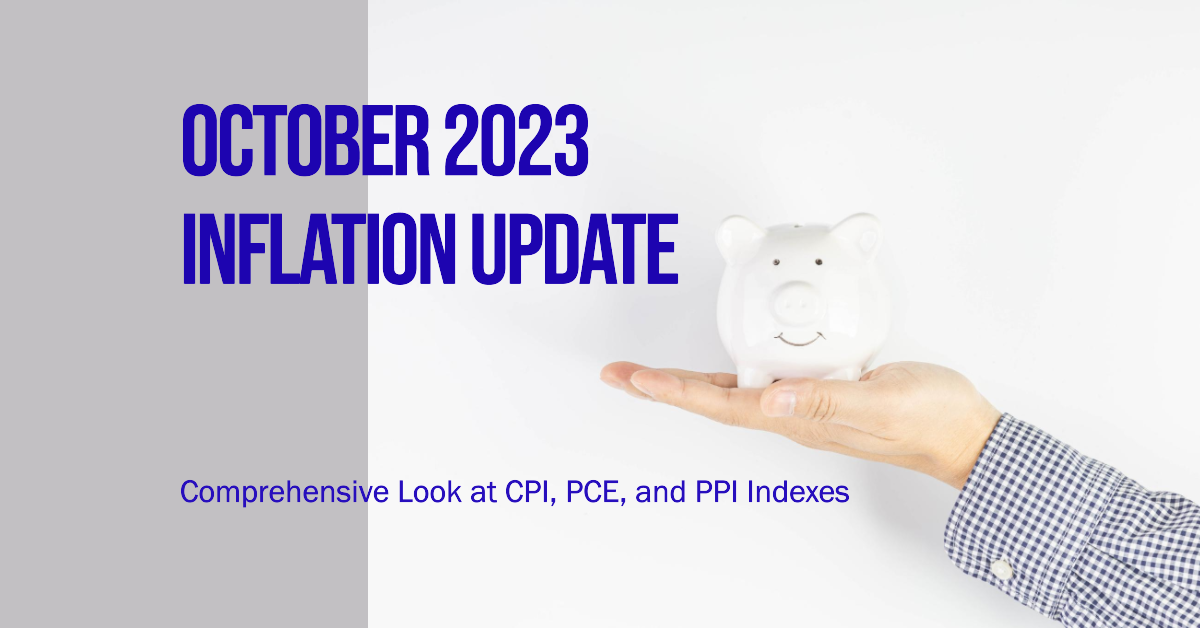October 2023 Inflation Rate Update: A Comprehensive Review on CPI (Consumer Price Index), PPI (Producer Price Index), and PCE (Personal Consumption Expenditure)
The US economy has been grappling with a surge in inflation, driven by a complex interplay of factors such as supply chain disruptions, rising energy costs, and geopolitical tensions. As of November 2023, inflation remains a pressing concern for policymakers and consumers alike. Understanding inflation dynamics requires a nuanced examination of crucial economic indicators published by the Bureau of Labor Statistics and the Bureau of Economic Analysis.
Consumer Price Index (CPI) & Core Inflation Rate
The CPI data is a widely followed measure of inflation that tracks the average change in prices paid by urban consumers for a basket of consumer goods and services. As of October 2023, the CPI felt to 3.2%, down from 3.7% in September 2023. The Core CPI, which does not include food & energy costs, falls from 4.1% to 4.0% year-over-year.
Producer Price Index (PPI) – Inflation Measurement for Manufacturers
This vital measurement tracks the average price change domestic producers receive for their goods and services. It is a leading indicator of consumer inflation, reflecting price pressures that may eventually pass on to consumers. As of October 2023, the PPI fell 0.5%, which is the biggest monthly decline since April 2020. This may further indicate that the inflation surge may be over. Core PPI, which less food and energy, remains relatively unchanged.
Personal Consumption Expenditures (Core PCE)
The PCE price index, also known as consumer spending, is measured by the Bureau of Economic Analysis. It is another closely watched inflation gauge, excluding volatile food and energy prices. It is considered a preferred inflation gauge used by the Federal Reserve as it provides a cleaner signal of underlying inflation trends. As of September 2023, the core CPE stood at 3.4%, indicating that inflation remains broad-based and persistent.
Oil & Gasoline Prices
Gasoline dropped 5.6% in October. The United States average price of regular fell 33 cents nationwide. Brent oil price also fell from $95.86 on September 29 to $86.82 on October 31.
What Does This Mean for Price Inflation?
The combined numbers may provide complementary insights into what inflation data may look like in the future. While the CPI reflects the overall inflation experience of consumers, the CPE excludes volatile components and offers a clearer picture of underlying inflation trends. Conversely, the PPI provides an early indication of price pressures that may eventually translate into higher consumer prices.
We have likely seen the end of significant price increases. The current picture indicates that the overall consumer price inflation has fallen after reaching an all-time high in recent years. While we are still not at the Federal Reserve’s target of 2%, this may indicate the end of interest increases set by the Fed. Moreover, while the growth rate of inflation may has slowed, it does not mean prices will fall.
Reach Out to Us!
If you have additional federal benefit questions, reach out to our team of CERTIFIED FINANCIAL PLANNER™ (CFP®), Chartered Federal Employee Benefits Consultants (ChFEBC℠), and Accredited Investment Fiduciaries (AIF®). At PlanWell, we focus on retirement planning for federal employees. Learn more about our process designed for the career federal employee.
Preparing for a federal retirement? Check out our scheduled federal retirement workshops. Sign up for our no-cost federal retirement webinars. Make sure to plan ahead and reserve your seat for our FERS webinar, held every three weeks. Interested in having PlanWell host a federal retirement seminar for your agency? Reach out, and we can collaborate with HR to arrange an on-site FERS seminar.
Want to fast-track your federal retirement plan? Skip the FERS webinar and start a one-on-one conversation with a ChFEBC today. You can schedule a one-on-one meeting.










